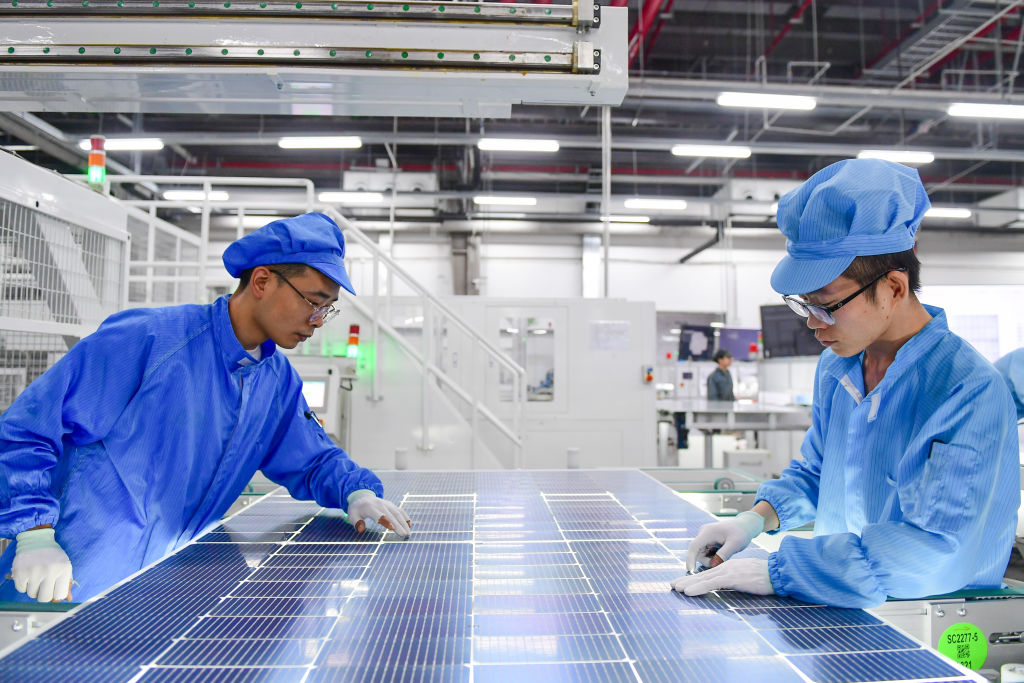TThe Biden administration’s green industrial policy was put to the test last year. Even with support from subsidies and tariffs, U.S. solar manufacturers struggled to compete with cheaper solar panels pouring into global markets from China. Some argue that the United States should ease regulations on cheap Chinese solar panels to accelerate the adoption of renewable energy, but this approach is unsustainable.
2023 was an eventful year in the race to introduce renewable energy. In the United States, deployment has been constrained by rising interest rates, delays in guidance on tax credit eligibility, and a project permitting process that is in dire need of reform. However, solar power has emerged as a bright spot, accounting for three-fifths of new renewable power capacity around the world. According to the International Energy Agency, solar power is the only renewable technology being deployed at a pace that will help us reach the net-zero goal by 2050.
This trend is good news for the climate, but it’s also good news for China. Just 10 years ago, China supplied 40% of the world’s solar panels. Currently, the company’s global market share is more than 80%, almost a monopoly.
It’s no coincidence that China is well positioned to take advantage of this solar power boom. In the mid-2000s, the Chinese government invested hundreds of billions of dollars to develop its renewable energy manufacturing sector, focusing on what officials have since called the “new three”: electric vehicles, lithium batteries, and solar cells.
A highly integrated supply chain, innovative manufacturing technology, and consistent government support have helped China’s solar power industry grow. The same goes for its huge domestic market, with China boasting nearly four times the installed solar capacity of the world’s second-largest market, the United States. But China’s solar industry’s ambitions go far beyond satisfying the world’s most power-hungry economy. Solar power exports from China increased by 34% year-on-year in the first half of 2023.
China’s solar power manufacturing industry has played an important role in accelerating the global adoption of renewable energy. But this patina masks a dark truth.
Read more: The dark side of rooftop solar power
The link between China’s solar power industry and the Chinese Communist Party’s persecution of the Uyghur minority in Xinjiang is well documented. One-third to one-half of the world’s solar polysilicon is produced in Xinjiang. The United States has restricted direct imports of solar power from China through policies such as the Uyghur Forced Labor Prevention Act and tariffs designed to protect American industry from dumping and anti-competitive practices. However, many solar modules assembled in Vietnam, Thailand, and Cambodia, the largest sources of solar panels in the United States, use components made in China. Currently, the majority of solar modules produced around the world are produced in the Uyghur region.
Chinese solar panels may produce energy without carbon emissions, but the manufacturing of these panels is not all that environmentally friendly. Coal, the dirtiest fossil fuel, accounts for the majority of China’s electricity generation. In Xinjiang Uyghur Autonomous Region, polysilicon refining, the most energy-consuming process in the manufacturing process of solar panels, is concentrated, and coal accounts for 77% of power generation. As a result, a recent study found that solar panels manufactured in China have 30% more greenhouse gas emissions than if this supply chain were reshored to the United States.
Furthermore, China’s continued solar dominance endangers the security of the United States and its allies. In 2021, the European Union relied on Russia for nearly half of its total natural gas consumption. The EU paid a heavy price for leaving its energy security in the hands of President Vladimir Putin. Some environmentalists argue that renewable energy cannot be weaponized like fossil fuels, but this is extremely naive. Currently, Europe is the destination for more than half of China’s solar power exports. Once again, European allies are selling security for cheap energy. The United States must not make the same mistake. Although the trade trends for solar modules and fossil fuels are different, their overwhelming dependence on one country, especially an adversary, poses a real security threat.
Critics of the Biden administration’s environmentalism argue that avoiding the use of cheap Chinese solar panels will slow the energy transition. This may be partially true. But while Chinese solar panels are 20% cheaper than their U.S. counterparts, this number does not make or break the U.S. solar energy industry. High interest rates and a quagmire of permits also need to be addressed.
It is impossible to end China’s dominant position in the global solar power market. You can get a huge head start. However, the United States should try to loosen its grip on China. Domestic clean energy production incentives based on the Inflation Control Act are a start. The Biden administration may also reimpose tariffs on solar power components made in China that transit through Southeast Asian countries. It could also put pressure on the European Union and other allies to take a stronger stance against anti-competitive behavior and human rights abuses by Chinese solar companies. Finally, the Biden administration should work with allies like India to take advantage of lower labor costs to increase solar manufacturing capacity.
This strategy may slightly delay the introduction of solar energy. But the alternative of allowing China to continue its global solar monopoly is too high a price to pay.
